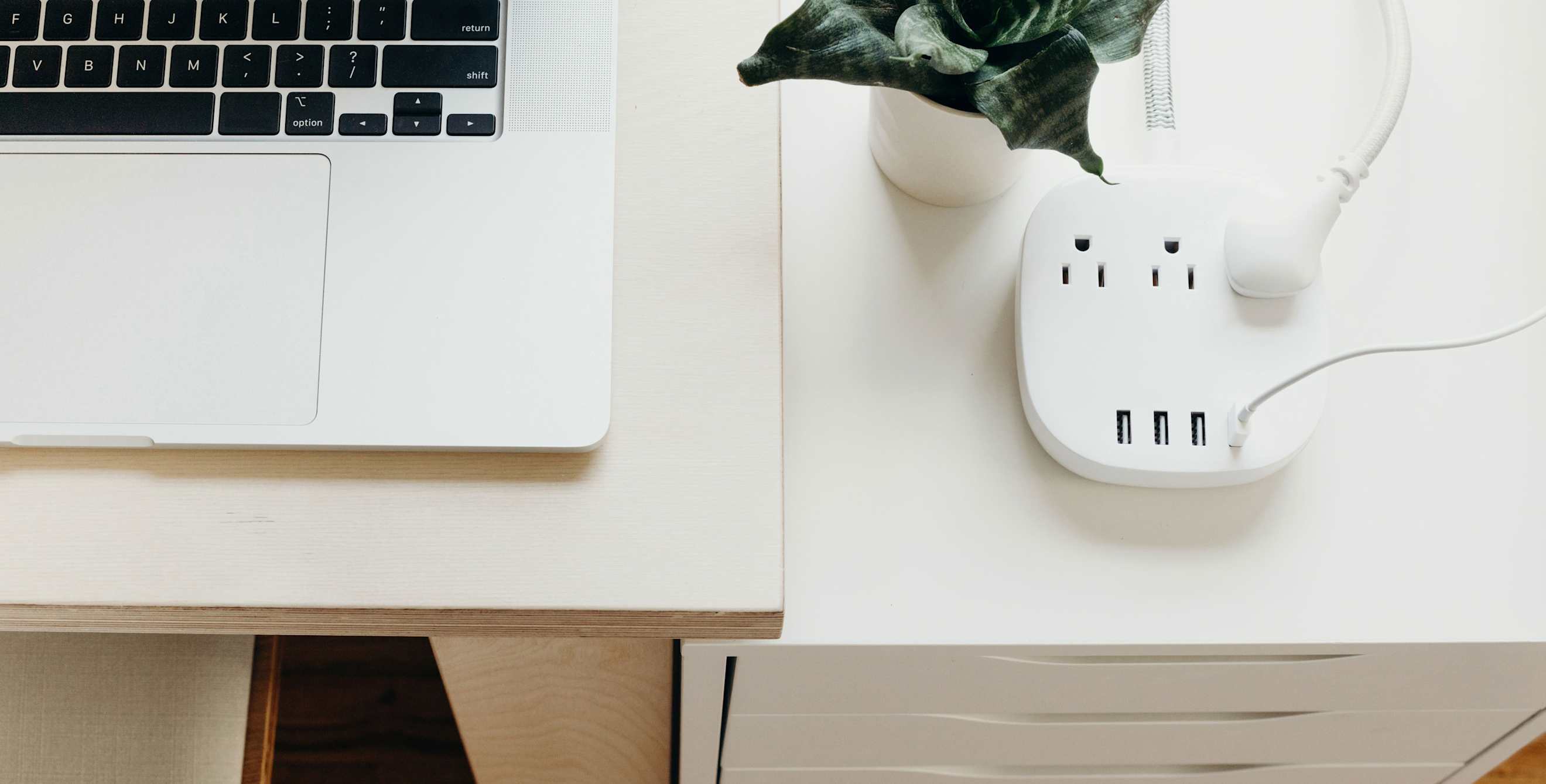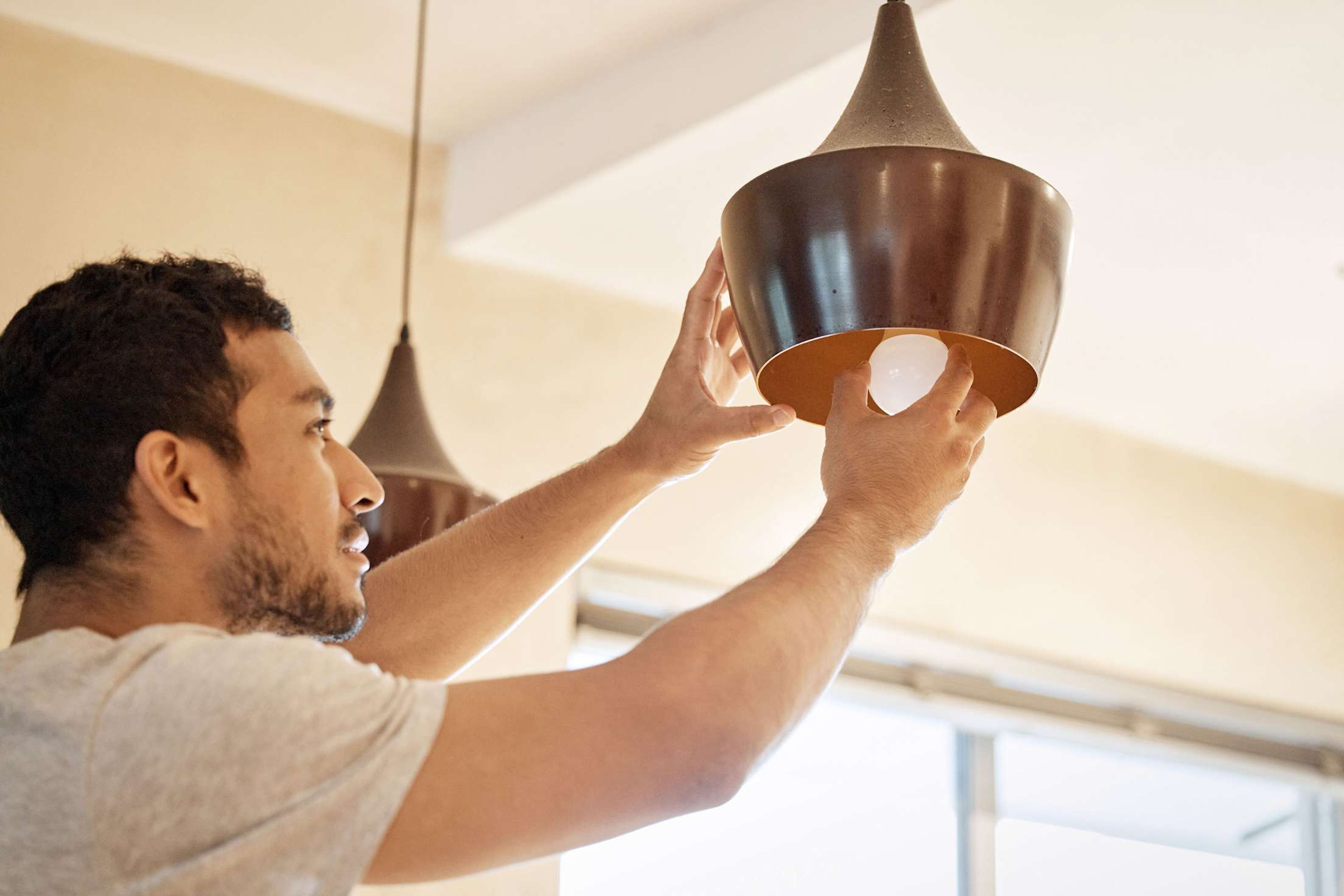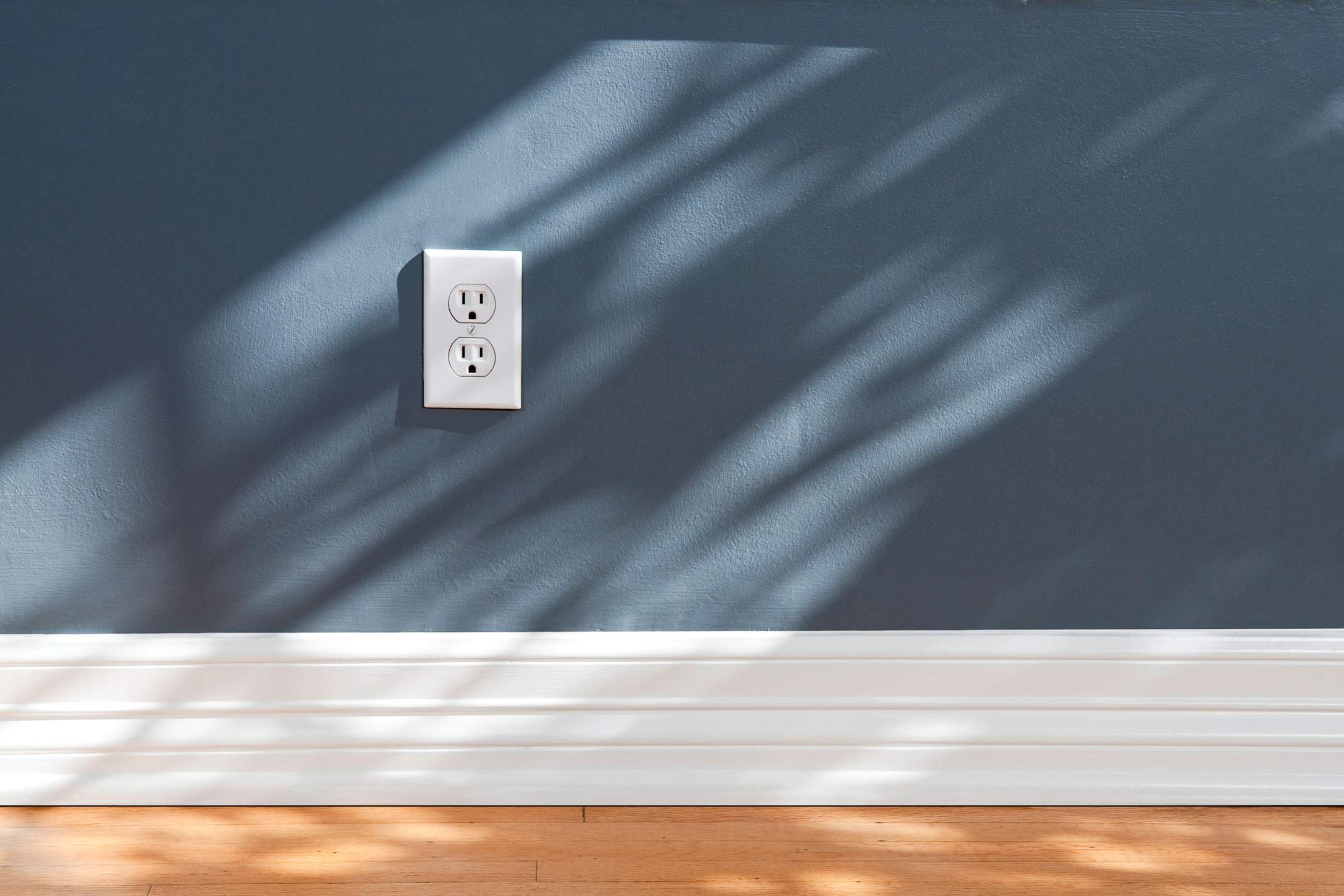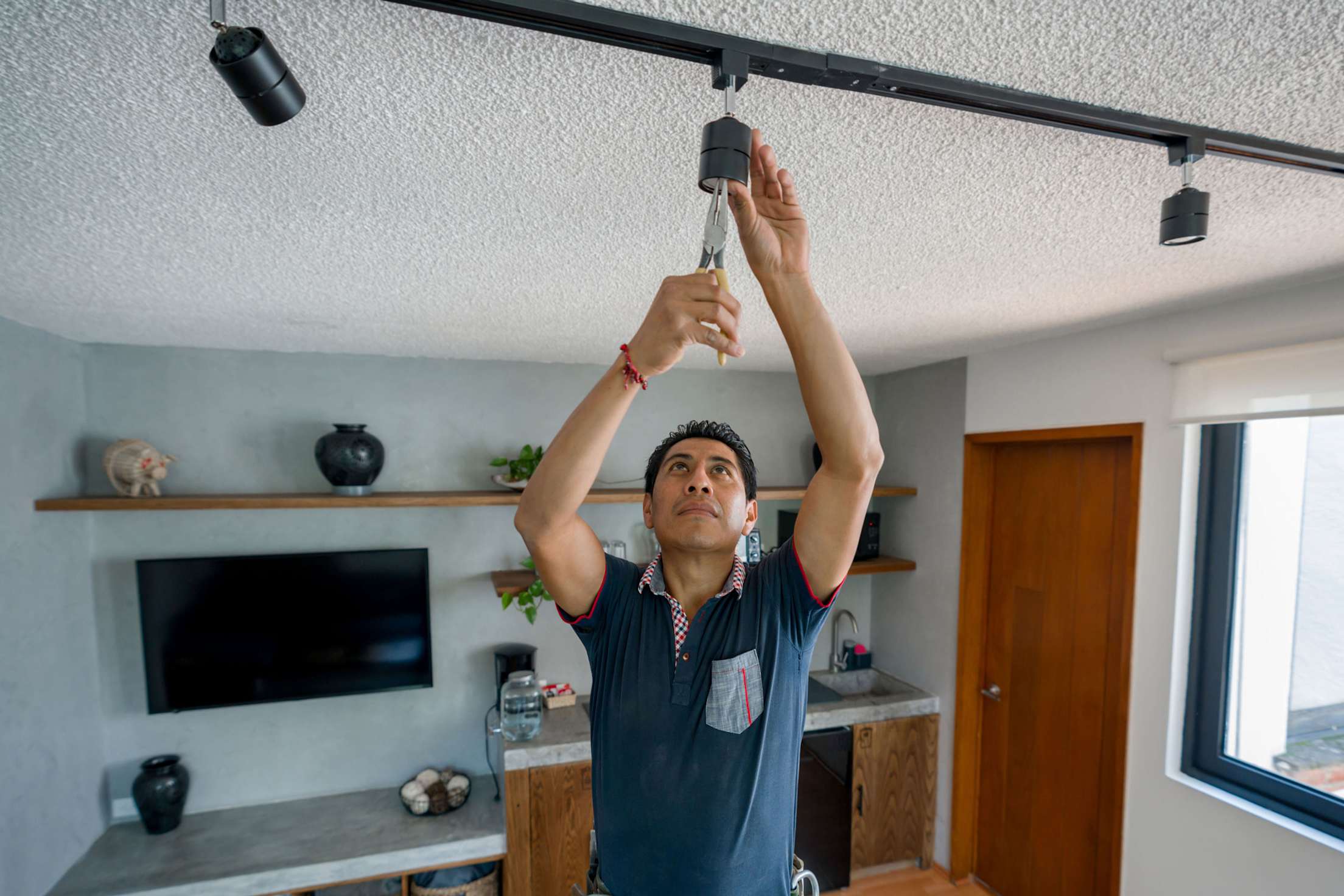
Home Electrical Safety Basics
Prevent fires and keep yourself and your loved ones safe.

Electricity powers everyday items from toothbrushes to cars. But as we flip a switch or push a button, it can be easy to forget that electricity can also cause shocks, electrocution, and fires.
“People just take electricity for granted,” says Brett Brenner, president of the Electrical Safety Foundation International (ESFI). “But electricity is uniquely unforgiving. You can’t smell it or taste it. And if you tangle with it, it’s usually not a good outcome for you.”
Electrical malfunctions caused an estimated 24,000 residential building fires, 310 deaths, 850 injuries, and $871 million in property loss each year in the United States from 2014 to 2016, according to the U.S. Fire Administration.
“Some of the most frequent causes of electrical shocks or fires in the home are easily preventable,” says Matthew Preble, a home expert with AAA. Here’s what you need to know to keep your home and your loved ones safe.
1. Install and test safety devices.
Properly operating smoke alarms and fire extinguishers are essential.
Test your home’s smoke detectors frequently—the National Fire Protection Association (NFPA) recommends doing this once per month—and be vigilant about replacing the batteries, Preble says.
Look for a fire extinguisher with a class C or ABC rating, which can handle an electrical fire, Preble recommends. Make sure the extinguisher is in an easy-to-reach location, and check it every two years to ensure it works, he says. To do so, check that the pressure gauge is in the operable position, and inspect the canister and hose for any signs of damage.

Ensure bulbs are the right wattage for your fixture.
2. Use the right wattage.
“Only use light bulbs that have the recommended wattage for your lamps or fixtures, to help prevent overheating,” Preble says. Check wattage requirements on the light socket or fixture, and only use bulbs that are beneath the listed threshold. When replacing bulbs, opt for LEDs. Not only do they save energy, but they don’t get hot when in use.
3. Watch extension cords and wires.
Extension cords are a temporary—not permanent—power source, notes Corey Hannahs, a senior electrical content specialist with the NFPA. When using extension cords, be sure you follow these guidelines:
- Never use an indoor extension cord outside.
- Replace extension cords that are frayed or pinched or that have broken wires or damaged cord ends, such as missing grounding blades.
- Never plug in items that exceed the rating the cord can accommodate.
Avoid running any cords under carpet, bedding, or other flammable materials, and keep cords away from doorways or other high-traffic areas, Preble says. Appliances or electronics with frayed or broken wires should also be replaced, he adds.

Take a close look at your outlet before you plug in.
4. Inspect your outlets.
With time and use, electrical outlets can wear out or fail. Watch for these common problems:
- Loose plugs. To prevent shocks or excess heat, electrical plugs should fit snugly in outlets, Preble says.
- Discoloration. Back away from the outlet and look at it, Brenner recommends. Dark, soot-like discoloration is a sign the outlet has failed. “[Outlets] should be replaced if you see burn marks around the receptacle,” Preble says.
- Heat. Outlets shouldn’t be hot to the touch, spark, or make crackling noises.
5. Confirm your home’s electrical system is up to code.
“Make sure your electrical system is up to code, especially if you own a home that’s 20 years old or older,” Preble says. You may need to update an outdated electrical panel or replace old wiring. Reach out to a qualified professional, such as a licensed electrician, if you have any concerns, Hannahs advises.
Outlets, too, may need an update. New homes and any home that is being updated must have ground-fault circuit interrupter (GFCI) outlets installed in areas prone to dampness, such as the kitchen, bathroom, and garage, Hannahs says. These outlets prevent shocks by automatically tripping the circuit if they detect a ground fault: This occurs when electricity flows along an alternative path to the ground, such as through water or a person. If your home was built before this was required, consider an update.
Smart Tip: “GFCIs should be tested regularly, per manufacturer’s instructions, to ensure they are working properly,” Hannahs says.
6. Keep your electrical panel clear.
Your electrical panel must be readily accessible. “Do not store anything in front of it,” Hannahs cautions. To be up to code, you’ll need three feet of clearance in front of panels, and more than six feet of clearance from the floor to the top of the panel or above.
7. Be aware of common hazards.
Along with the items mentioned above, be mindful of these other common electrical hazards:
- Space heaters. Use these with caution. They should always be monitored, and should be placed far from flammable items (rugs, curtains, and so on.), Preble says. Keep space heaters away from kids and pets, and plug them directly into a wall outlet with a high wattage capacity, he says. Turn off and unplug space heaters when they’re not in use.
- Pests. Rodents can chew the wires in your home, causing outages or fires, Preble says. “It’s a good idea to inspect the perimeter of the home to look for holes where pests can enter, and have them addressed by a professional.”
- Overloading circuits. Homes built before this century may not have the wiring to accommodate today’s energy-intensive technology. Another danger: Plugging too many appliances into one power source, Preble warns. A surge protector may have multiple outlets, but that doesn’t mean it’s safe to plug in eight power-heavy items. If a breaker trips, it’s a sign you’re using too much power, Brenner says. Other tip-offs you’re overloaded: lights dimming when the AC or another appliance powers on, or electrical items shutting themselves off.
- Counterfeit equipment. Using equipment and devices that haven’t been tested by a qualified electrical testing lab can lead to danger, Hannahs warns. Space heaters, for instance, should have independent safety certification labels. That’s true for surge protectors, too.

When in doubt, call a certified electrician.
8. Hire a qualified electrician.
“The best way to ensure electrical safety within the home is to ensure that qualified persons are performing any necessary electrical work,” Hannahs says.
There are some simple tasks, such as changing out a light fixture, that you may be able to safely handle on your own. But other projects are riskier—not only to yourself, but to future inhabitants of the home.
“If you have any doubts, hire an electrician,” Brenner advises. These professionals understand the code and potential dangers, and will be able to keep you safe.
Whether you own or rent your home, protect your personal property with AAA Insurance.